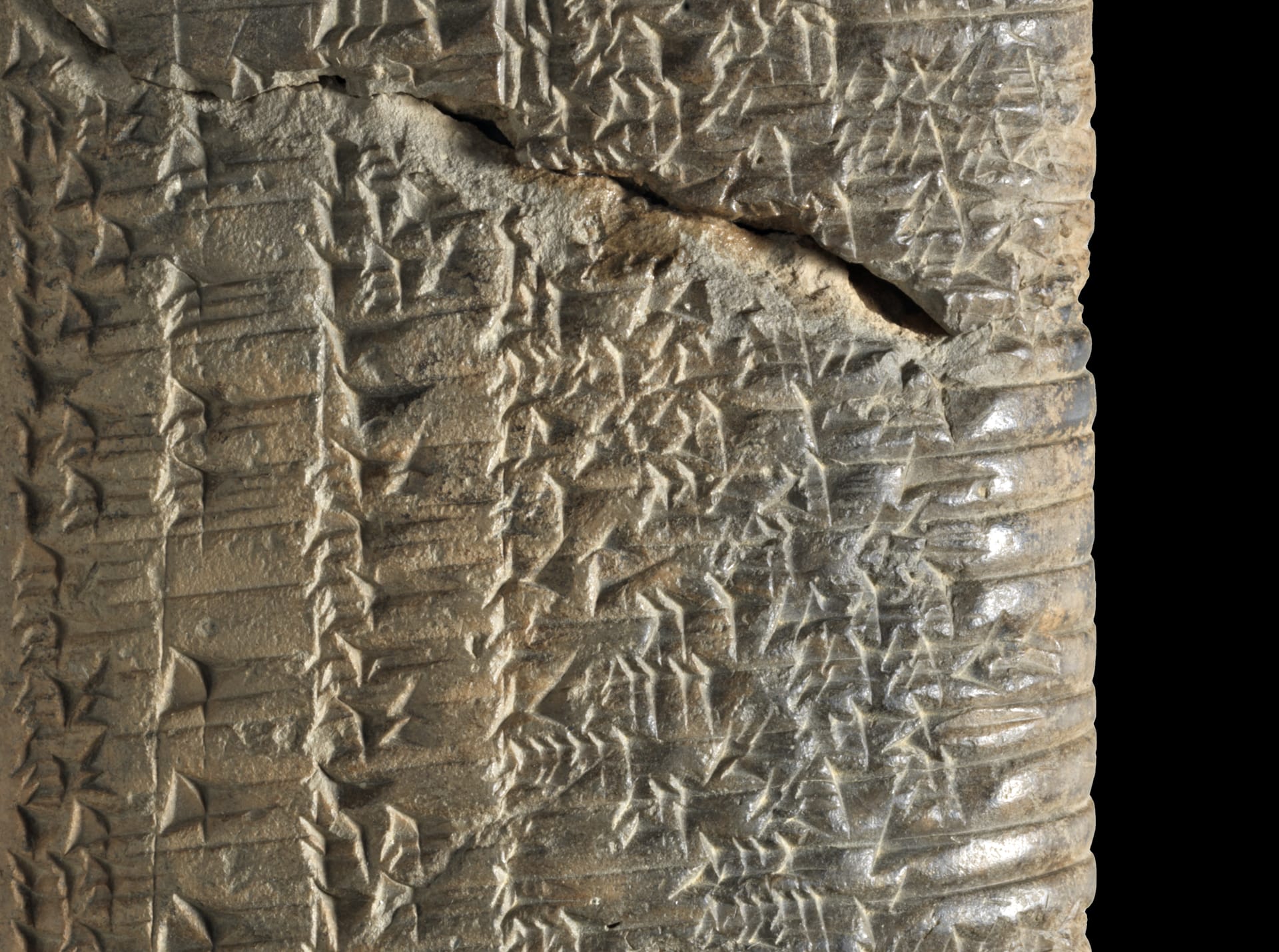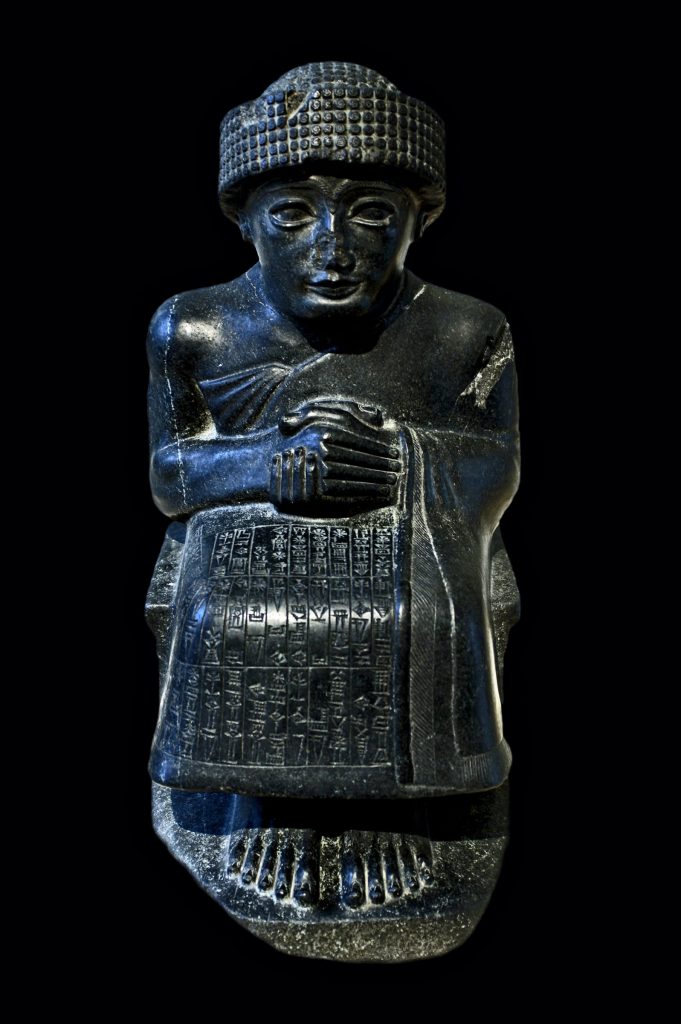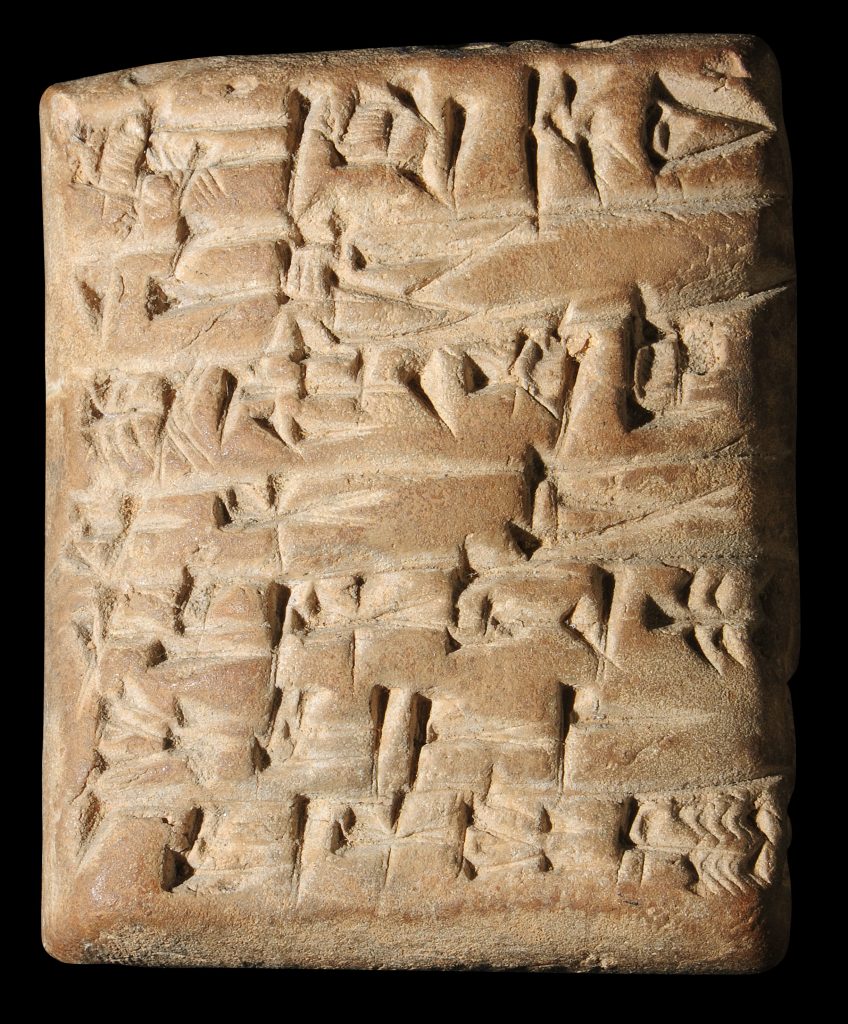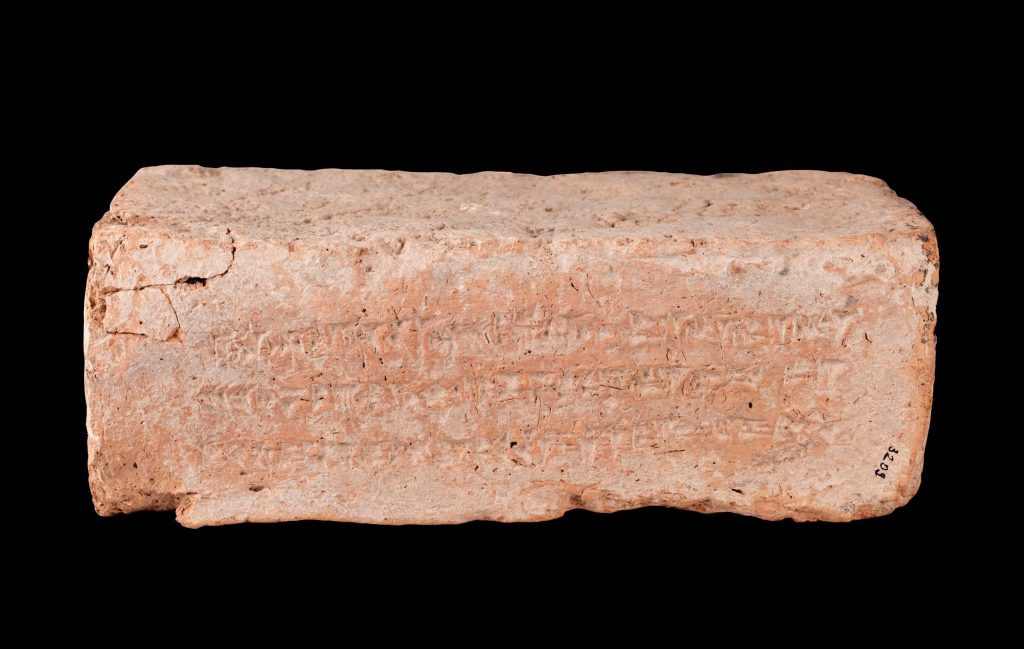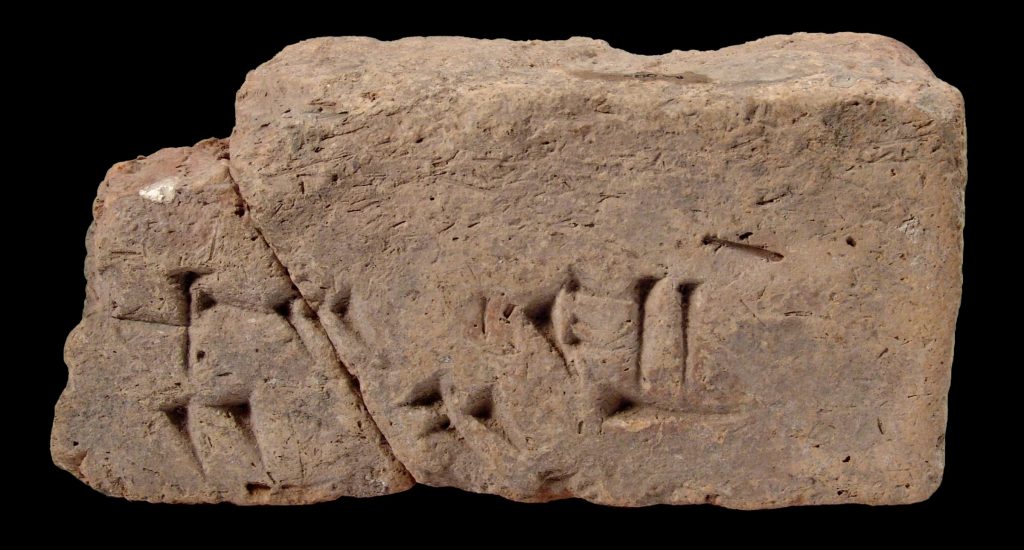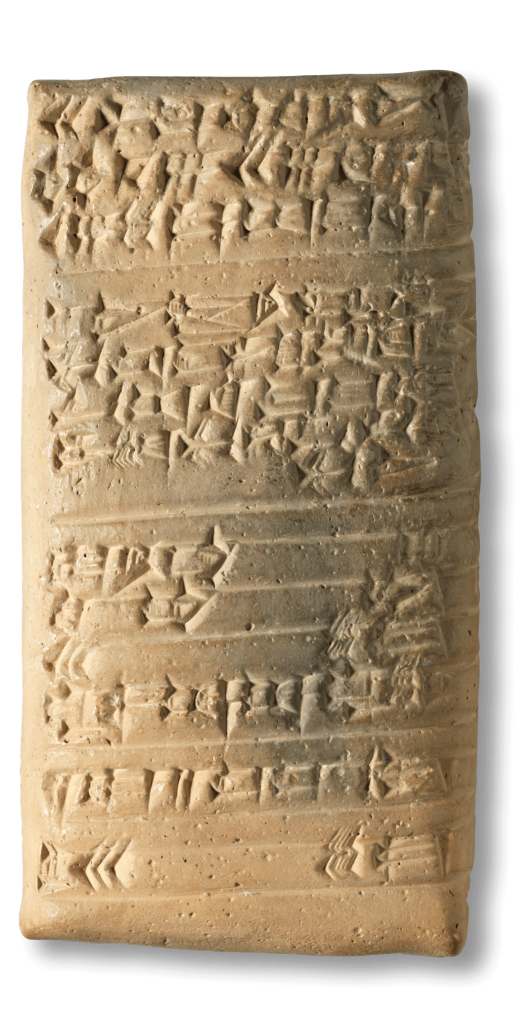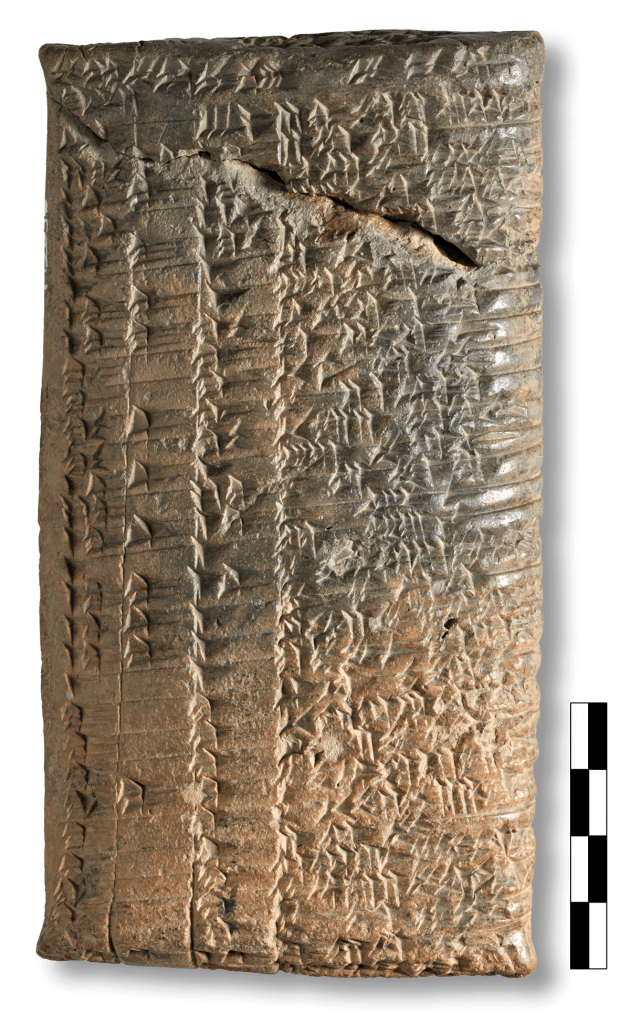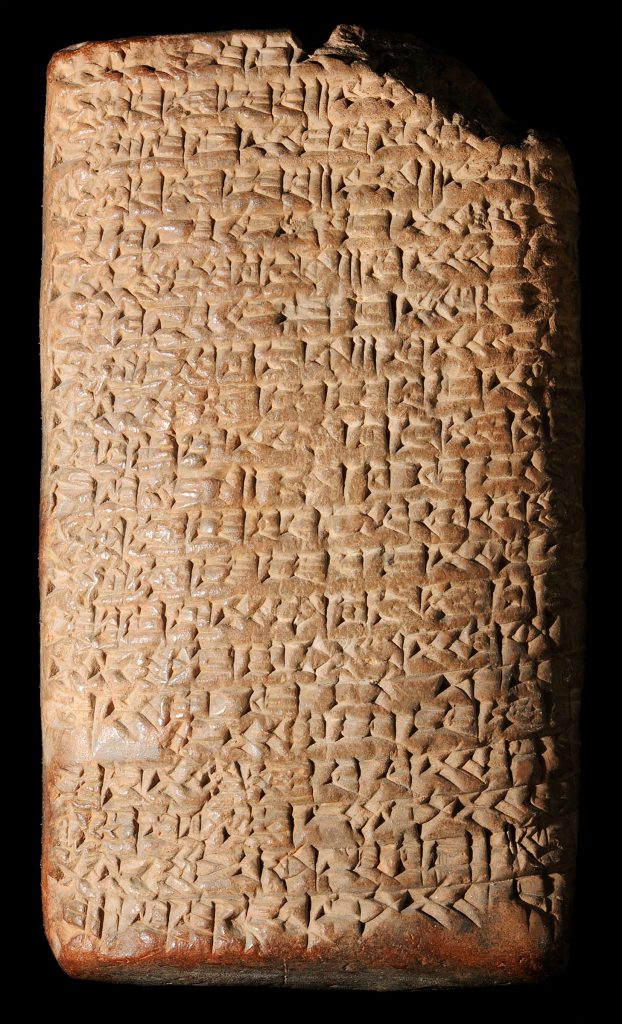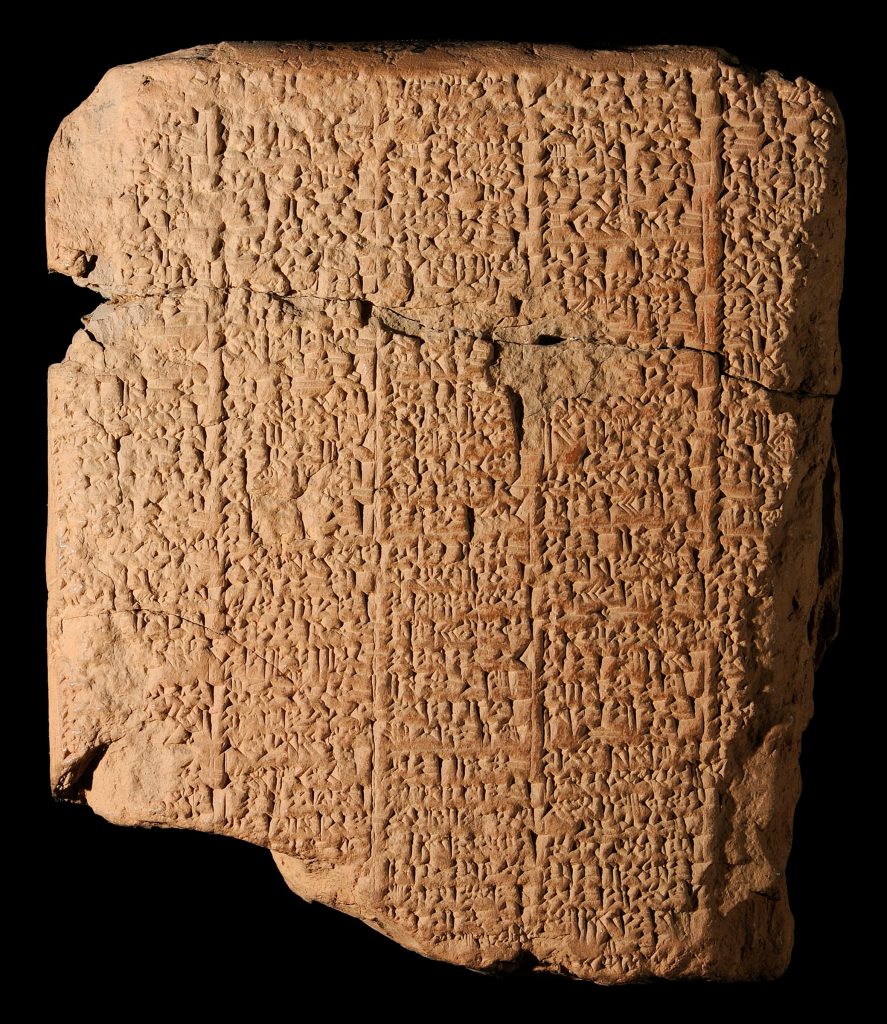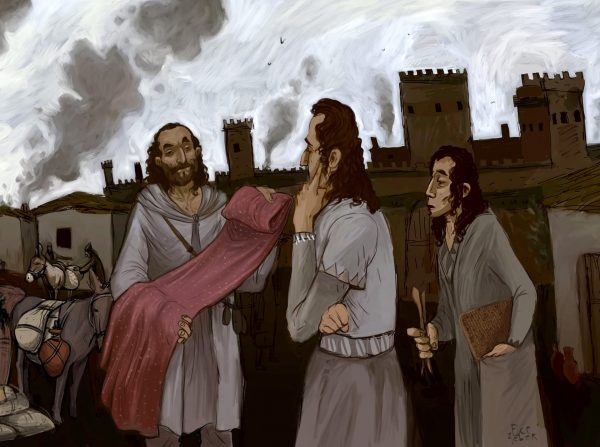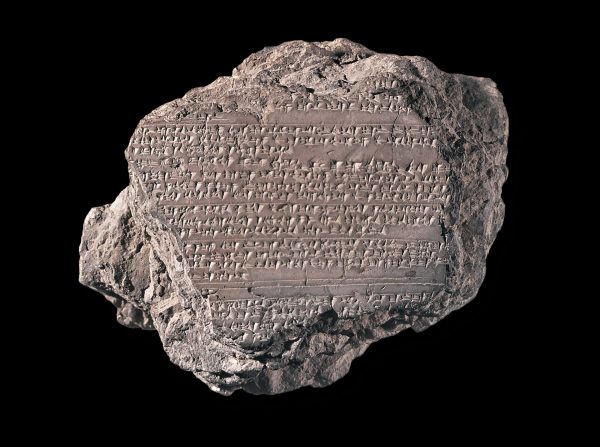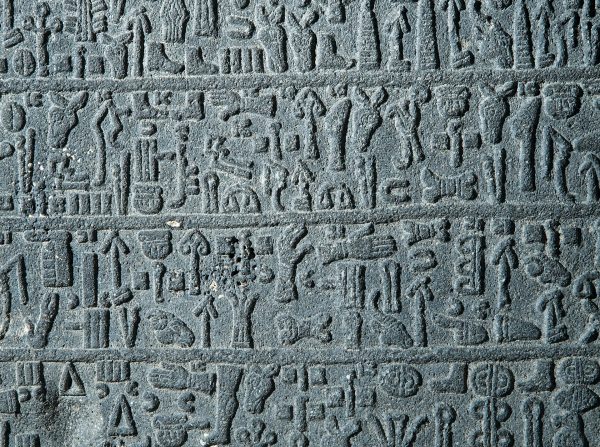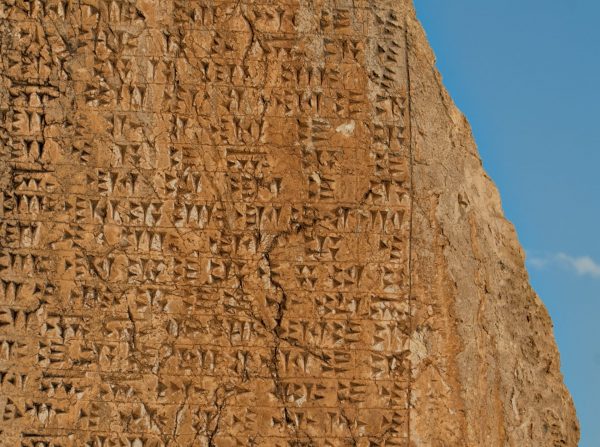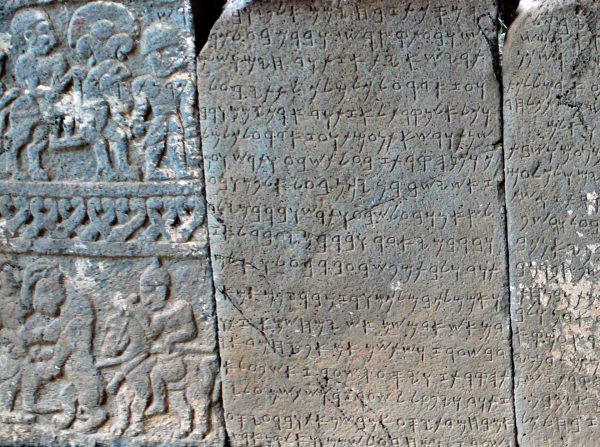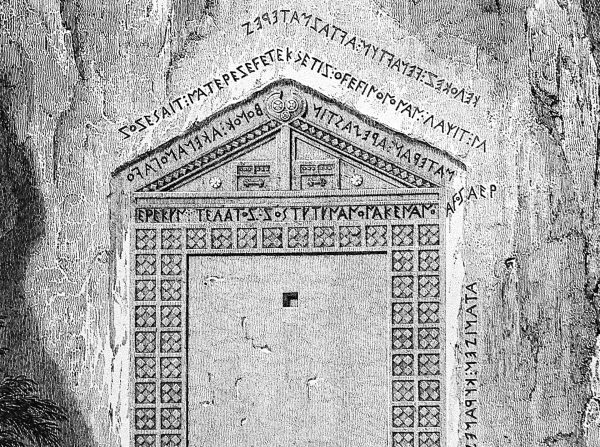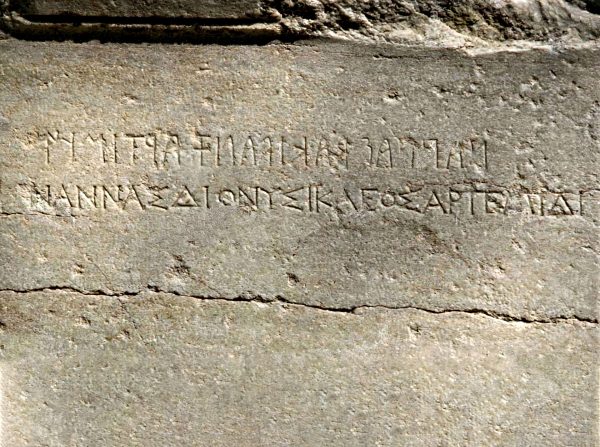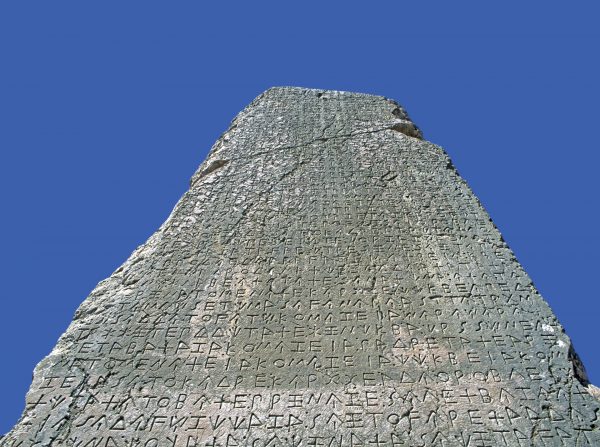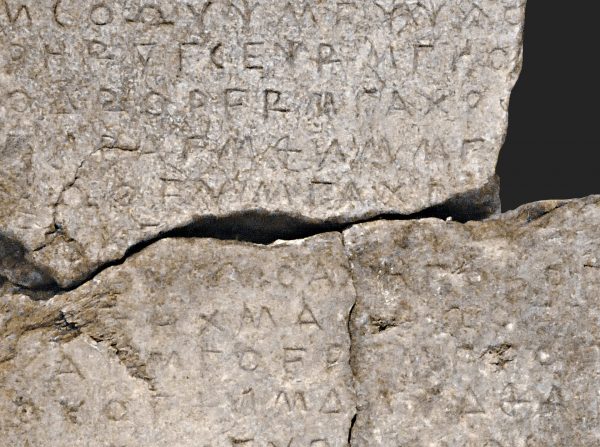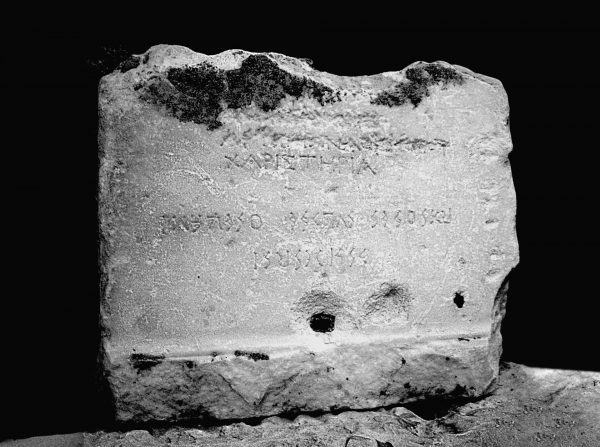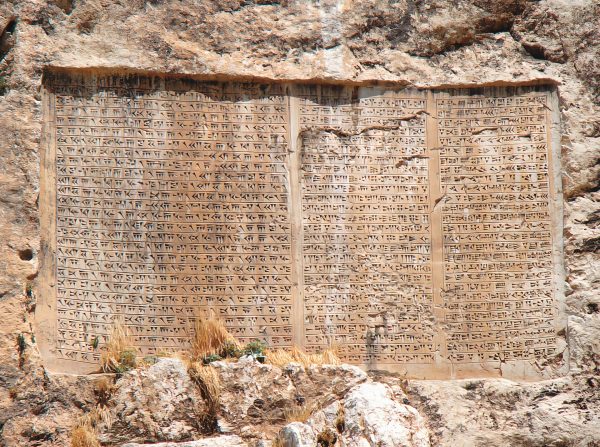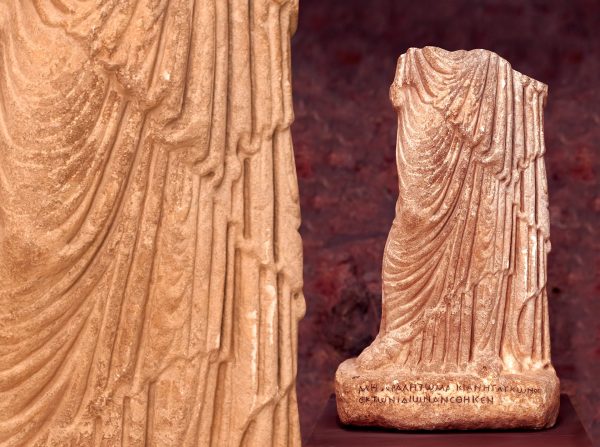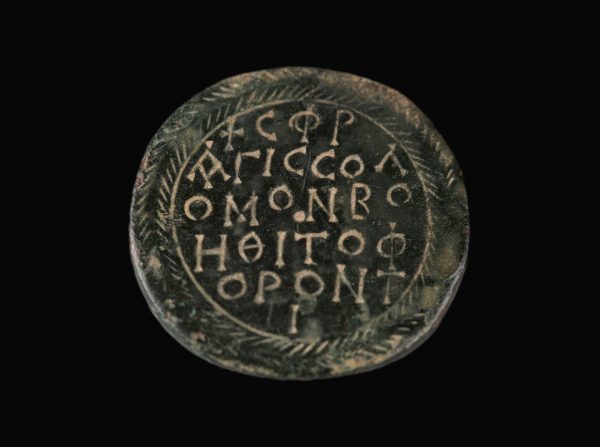Constituting the third phase in the development of writing, cuneiform also emerged from Mesopotamia like its precedents, namely counting stones and pictographic writing. Due to the difficulty of drawing pictures on clay and the lack of an existing recording system for concepts in need of expression, scribes turned to writing pictorial narratives by using linear shapes. This process enabled the transition to the linear writing system. Written on clay tablets with a blunt reed that leaves a triangular, wedge-shaped mark at its inscription, this system of writing was called cuneaus meaning, “wedge” in Latin. Born at the end of the 4th millennium BC and used actively in writing in early 3rd millennium, while cuneiform was initially opted for economic documents, it also became a means through which historical and literary texts were written between 2600 and 2100 BC.
Known as DUB in Sumerian, Tuppa in Akkadian, and Tuppi in Hittite, the clay tablets are rectangular in shape with slightly convex recto and flat verso. Written from left to right, the cuneiform features lines and includes information such as the contents of the inscription or the name of it scribe at the end.

